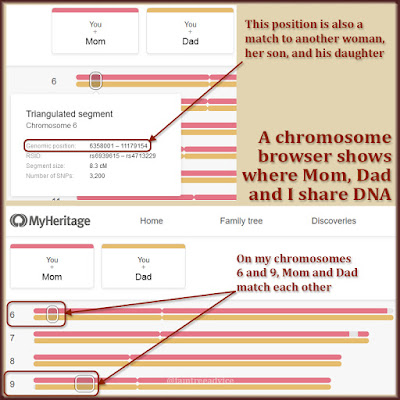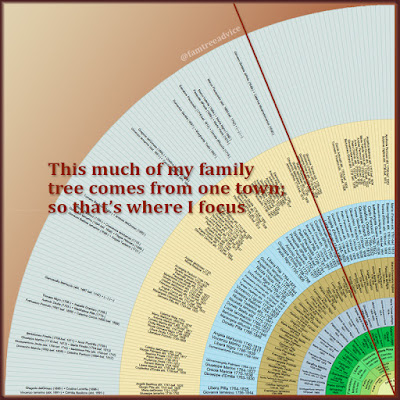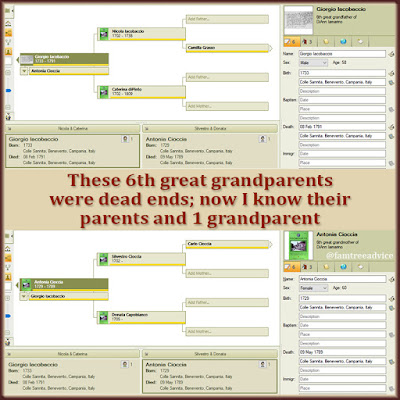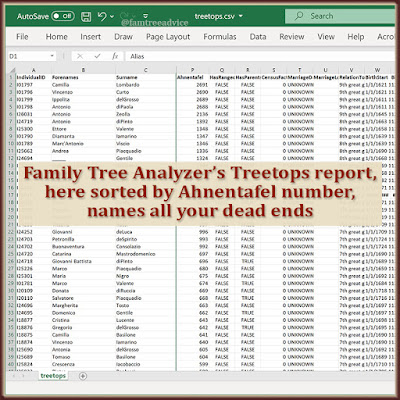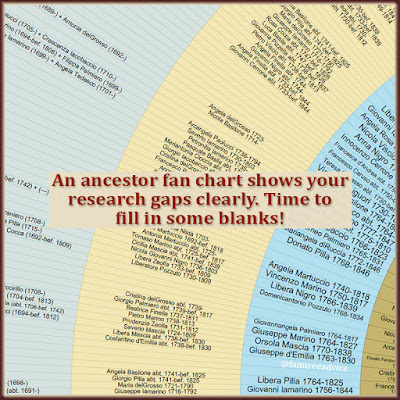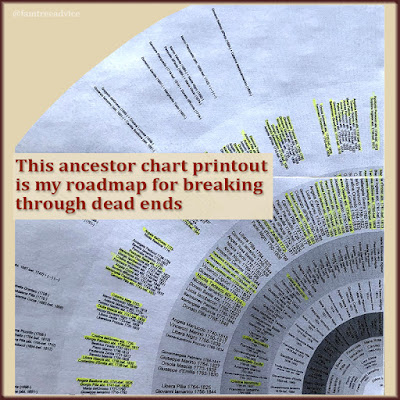On my Italian honeymoon, we took a day trip to find my Grandpa's hometown of Colle Sannita. Like many people, I had a fantasy of walking along the streets and finding a house with my maiden name on it.
That didn't happen. What did happen was a crazy adventure, but before things went haywire, we found the town piazza.
There was a touching memorial to their fallen sons, brothers, and husbands who fought in World War I and II. On a later visit, I photographed all four sides of the memorial and captured each soldier's name.
I knew I could identify many of the fallen and find them a place in my family tree. I know a website that lets you look up a fallen soldier and learn many facts, including their parents' names.
Three years after photographing the memorials, I haven't tackled this project. But seeing another memorial from my family's church kicked this project into gear.
Finding the Bronx Boys
They tore down my family's church in the Bronx, New York, not long ago. Every wedding from my parents' generation took place in Our Lady of Pity Church. My parents and their siblings and cousins attended Our Lady of Pity School. The priest who married my parents there baptized me there. I have vague memories of the church from my childhood.
My parents remember the church's fallen soldiers memorial quite well. Mom's brother Johnny's name is on it (LEONE J.). His B-17 plane crashed in July 1944, killing the whole crew. When I saw a photograph of the church memorial again, something struck me. Many of the last names were familiar from my recent research. Baldini, Frusciante, Vetere, Zeolla.
 |
| With so many familiar names, were any of my uncle's fellow soldiers related to us? |
It would be nice to find a place in my family tree to honor these fallen soldiers.
I searched for the Bronx soldiers in the 1940 census, in my parents' neighborhood. The first soldier I found with complete certainty was C. Vetere. The name Vetere comes from my great grandmother's hometown of Pescolamazza.
Crescenzio Vetere, sometimes called Joseph, was born in 1915 to Pietrantonio Vetere and his wife Giovina, later known as Mary. In 1920 they lived around the corner from the building where my dad grew up. In 1930 they lived a couple of buildings down. In 1940, Crescenzio and his new wife lived a couple more blocks away, but still within the church's footprint.
The family lost 29-year-old Crescenzio on 16 November 1944. It took 4 years for the military to return his remains to the U.S. and bury them in a military cemetery on Long Island.
While I'm pleased to learned so much about my Uncle Johnny's comrade in arms, I can't place him into my family tree. His father came to America too early for me to prove he was born in Pescolamazza. (The earlier ship manifests don't provide as much detail as the later ones, starting about 1898.)
I'll search for more of Johnny's other colleagues. But let me try an easier, World War I Italian soldier first.
Turning Back to Italy
Angelo Mascia is not a close relative of mine. As far as I know, he is not my blood relation at all. But his parents are in my family tree. And now, so is he.
I found him listed on the Colle Sannita monument as Mascia Angelo di Costanzo. The "di Costanzo" means his father's name was Costanzo. Knowing that helped me find his birth record easily. (See How to Read an Italian Birth Record.)
 |
| Finding this distant relative's military record led to the site of a massive war memorial. |
Angelo was born on 29 August 1894 in Colle Sannita to Costanzo Antonio Mascia and Maria Paolucci. With his exact birth date, I went to a website where I could look up his military record. (This excellent resource is only for the province of Benevento, which is lucky for me.) The record says he died near Monte Sei Busi on 2 August 1915. When I finally found it on a map, what I saw broke my heart. The area is a nature preserve. But what they've also preserved are the legendary World War I trenches, gun turrets, and rows of barbed wire obstacles.
I searched online for an Italian battle happening on that date. I've done this research before to figure out where my grandfather was held as a prisoner of war. I found the battle, and I found a map showing the area where it happened.
Angelo died on the second-to-last day of the Second Battle of the Isonzo. There were 12 battles of the Isonzo, fought in the Alps near the border of Austria. This battle claimed 41,800 Italian soldiers, including Angelo.
Now I can add Angelo's birth record and military record to my family tree. I'll also add my photo of his name on the town's monument.
I love to find worthwhile genealogy projects to shake up my routine. This one seems very worthy of my time. Have you found monuments like these in your travels? If you have photos, it's time to take another look.
